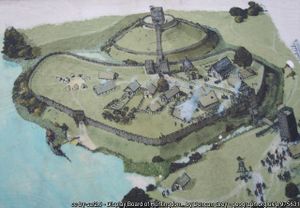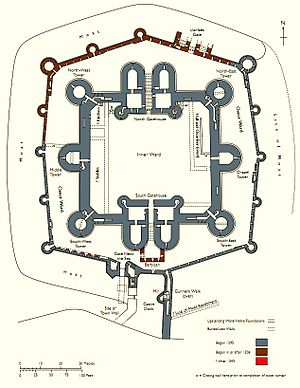Category:Norman Conquest
From DT Online
Throughout the early Middle Ages, following the end of the Roman occupation of Britain, England was divided and subjected to many incursions by Vikings and Anglo-Saxons and was eventually united under the Saxon king Harold. But attempts to take the English crown continued and, in September 1066 Harold, had to march north to defeat invading Norwegians led by Harald Hardrada, King of Norway, at the Battle of Stamford Bridge. Only three weeks later, in October 1066, Harold had to return south, with his now exhausted army, to face a Norman invasion.
The Normans came across the English Channel from Normandy, an area in northern France which, in AD911, the French king, Charles III gave to the Viking King Rollo as part of a peace treaty. So the Normans were descendants of the Vikingsand William, Duke of Normandy claimed that he and not Harold should be King of England.
In October 1066 the two armies met at Battle of Hastings. As depicted on the Bayeux Tapestry, Harold was killed by an arrow in his eye and, on Christmas Day 1066 William the Conqueror from Normandy was crowned King of England in York.
This brought an end to Anglo-Saxon and Viking rule and William replaced all the Anglo-Saxon lords with Normans and imposed a Feudal System of control. Twenty years after the Battle of Hasting the Doomsday Book recorded the land acquired by the new Norman owners.
The invading Normans brought with them pre-built wooden 'castles' comprising 'kits' of pre-cut timbers and bolts which could quickly be assembled into fortifications to reinforce their authority, often making use of existing sites of Roman or Saxon forts. Over time, the wooden temporary structures were replaced with stone, an example of which is the Tower of London.
The initial fort-like structures on raised ground were later surrounded by a protected enclosure. This design was known as a Motte and Bailey : the 'Motte' being the raised tower and the 'Bailey' the fortified enclosure. The square cornered design of the 'Motte' was vulnerable to attack by mining in Siege Warfare. Tunnellers would mine under a corner, prop it up with timber, then set fire to the wooden props so that the corner would become unsupported and collapse.
Continued advances in military tactics and technology (e.g. Mangonel and Trebuchet), plus developments in building methods, led to the Motte and Bailey design becoming out dated and, by the end of the 13th century, Concentric Castles became preferred by the Plantagenet King Edward I. These were a 'Castle within a Castle' with a central Keep surrounded by a Moat and a series of outer Curtain Wall defences.
In addition to massive stone castles, Normans transformed the English landscape with churches, cathedrals and monasteries all of which clearly demonstrated they now controlled most major functions within the Church and the State.
A topic involving The Normans provides many opportunities for Design and Technology activities, including making models and might include:
- Model Castles - to understand the reasons for their design and how this changed over time;
- Castle defences - including Drawbridge and Portcullis;
- Siege Weapons - including Mangonel, Trebuchet, Ballista, Battering Ram;
- Weaving and Tapestry
- Chain Mail and Armour
Pages in category 'Norman Conquest'
The following 3 pages are in this category, out of 3 total.
Media in category 'Norman Conquest'
This category contains only the following file.
- Geograph-975631-by-Duncan-Grey.jpg 640 × 443; 61 KB




